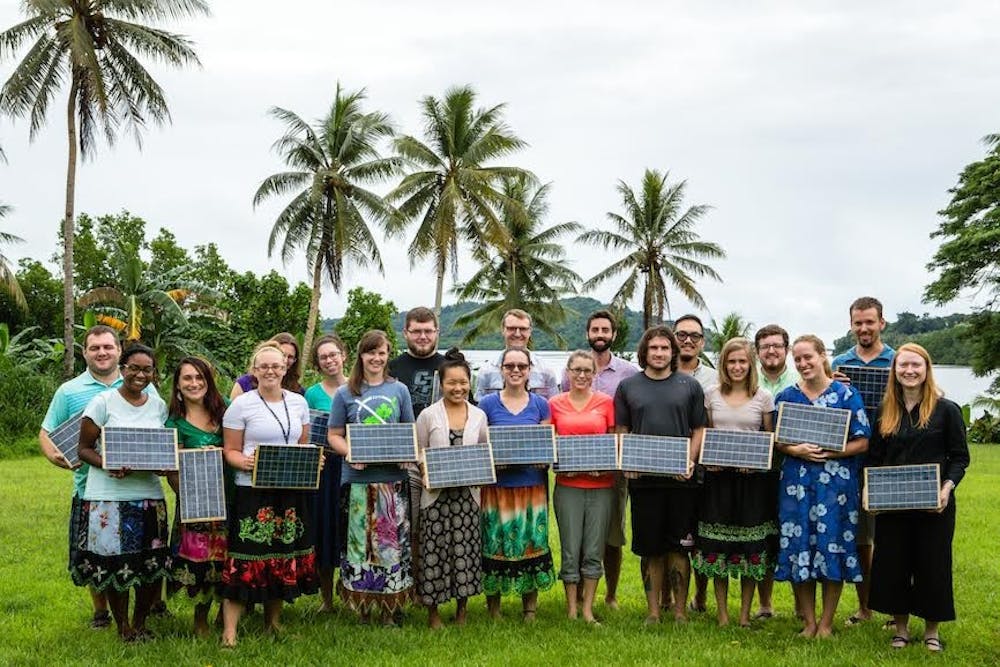Online access has changed the way people view education — however, 60 percent of the world is still without an internet connection.
It's this statistic that inspired the creation of the Solar Powered Educational Learning Library, a project hosted on ASU's Polytechnic campus in the Ira A. Fulton Schools of Engineering.
Laura Hosman, a professor in the engineering school, developed the digital library, dubbed SolarSPELL, in an effort to greatly increase the potential to educate people in countries without stable internet access.
“I’ve been working on solar powering projects in the field, and in a previous class a few years ago, my students developed a computer lab in a box that we deployed in Micronesia,” she said. “And a Peace Corps volunteer was stationed at a neighboring Island. She contacted us and said ‘Hey, what can you do for my island?’ I started thinking what can we do for her island?”
Hosman set a goal of getting educational content to countries while employing an easily usable form of technology, eventually leading to SolarSPELL.
SolarSPELL is a digital library filled with content specialized for the region in which the device is based. It is built on solar power and contains its own Wi-Fi hotspot, making it completely self-powered and well-suited for areas with minimal infrastructure. Equipped with a solar panel and small microcomputers known as Raspberry Pi, the device was designed to function in even the most rural areas.
“If you’re not used to using complex technology, it’s definitely not an overnight process, figuring out how we could get content to even the most remote, and isolated locations,” Hosman said. “Still using technology but using technology that would be as basic as possible, ruggedized and people could connect to it with their own devices.”
Despite its basic design, Hosman initially found that teaching educators how to properly use SolarSPELL was daunting.
“A continual setback over the years has to do with the human dimension, which is working with the teachers,” she said. “Spending a day, a week or even a month with them couldn’t possibly be enough for training.”
Hosman eventually saw the Peace Corps as a perfect fit to help.
“It felt like a huge setback for quite a while until the lightbulb went on over my head about how the Peace Corps is a perfect partner,” she said. “They’re there to teach English and help professionalize teachers and to use technology where possible.”
Because Hosman’s technology worked in tandem with the Peace Corps’ mission, she felt the partnership was a perfect fit, and the added manpower allowed it to spread to islands throughout the Pacific.
Hosman recently moved her research to ASU and has a new team of four engineering students.
The team is furthering SolarSPELL’s development in preparation of a trip to Tonga, slated for December or January.
Looking at the needs of the people an engineer is designing is crucial in this type of research, Miles Mabey, a robotics engineering junior on the SolarSPELL team, said.
Mabey has taken multiple classes focused on human-centered design, but he said having a chance to practice outside of the classroom is a great opportunity.
“Going into this project, we already had some concepts of human-centered design, but I think acutally taking the SolarSPELLs with us to Tonga and seeing the people’s reaction right then and there will really solidify how important human-centered design is and will get us to practice some of those techniques we only get to hear about," he said.
Fellow team member Paul Horton, a junior software engineering and applied physics major, said despite only working on SolarSPELL for a few weeks, he has already seen how important the project is.
“I’d say that what we’re doing is incredibly valuable,” Horton said. “Without having some sort of resource like this, a lot of students don’t have access to textbooks or any other form of learning outside of what they’re taught through teachers who don’t have a lot of resources.”
Horton said being involved in SolarSPELL has given him a more human look at engineering.
“From both an engineering and a life standpoint, it’s (important) to understand people you’re developing for,” he said. “We look at Ideo, a design firm in California, and we’re trying to model their design approach ... It’s understanding other perspectives, which especially in developing countries, that’s a very important thing to learn.”
Reach the reporter at Emmillma@asu.edu or follow @Millmania1 on Twitter.
Like The State Press on Facebook and follow @statepress on Twitter.




